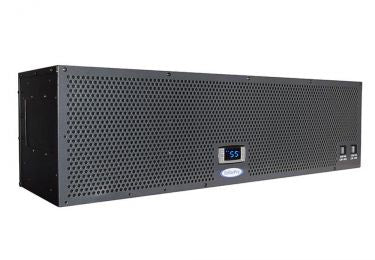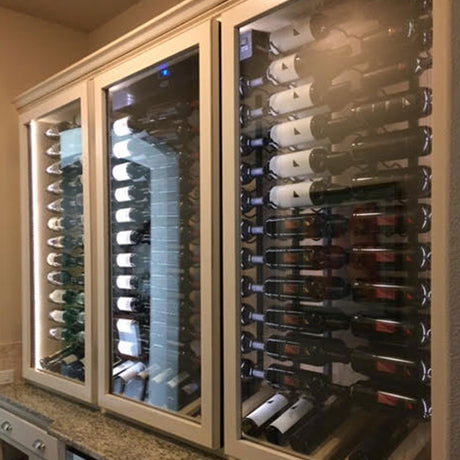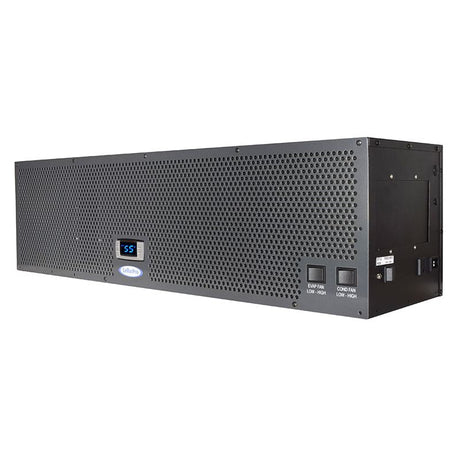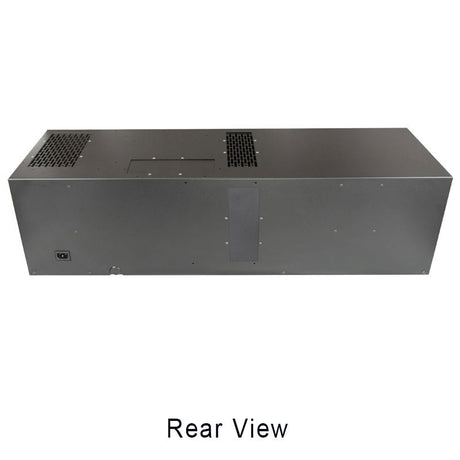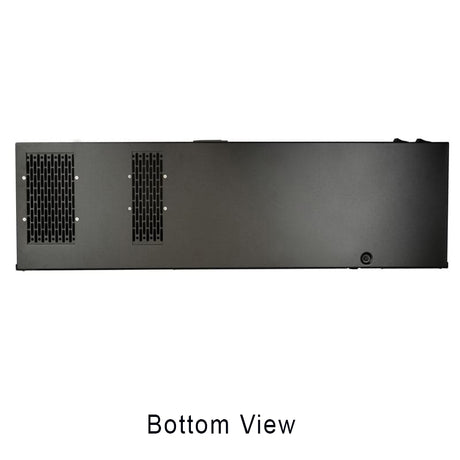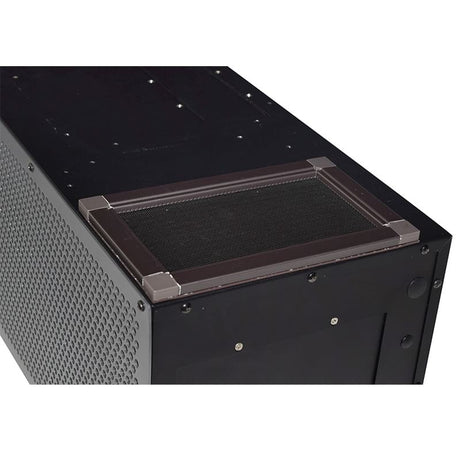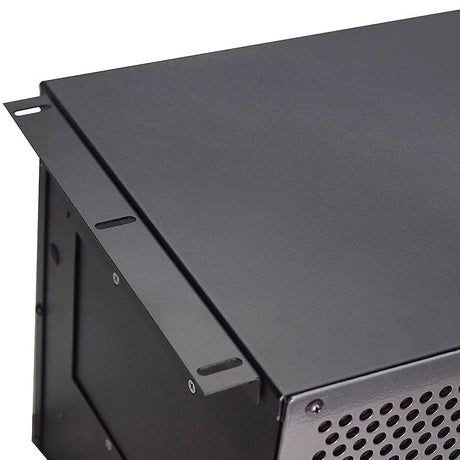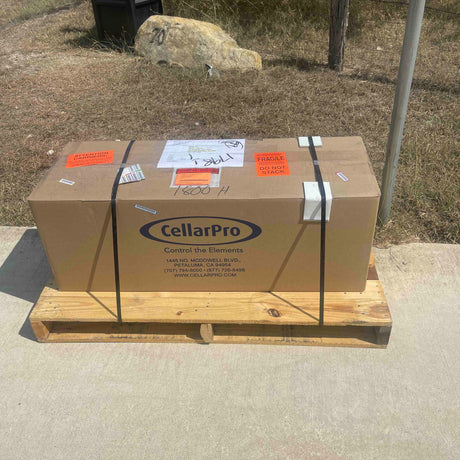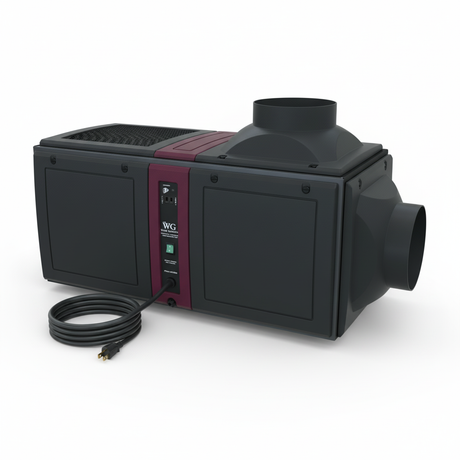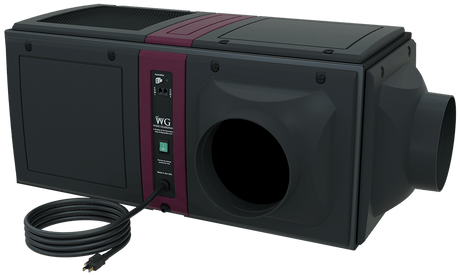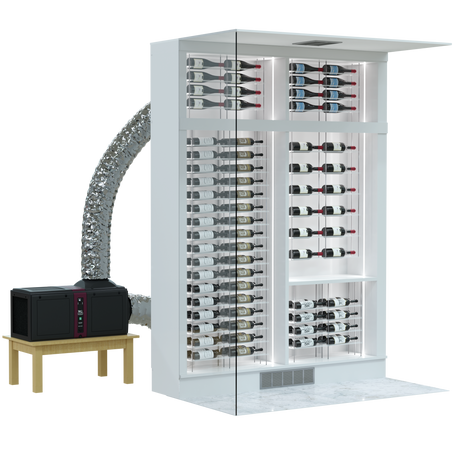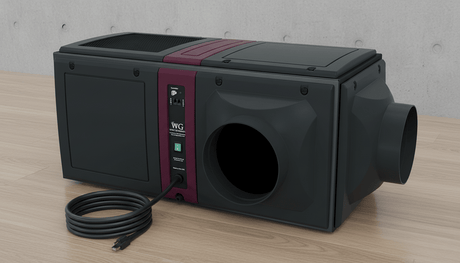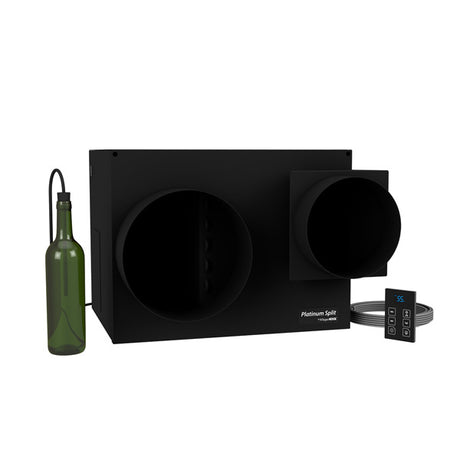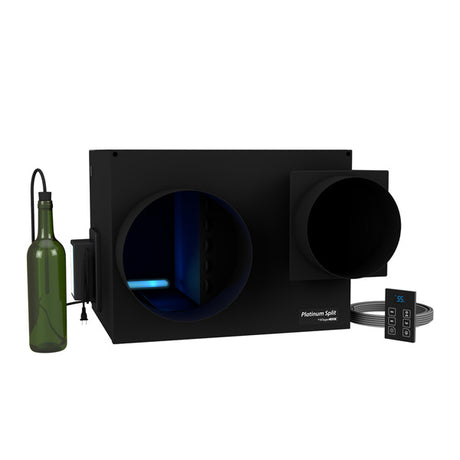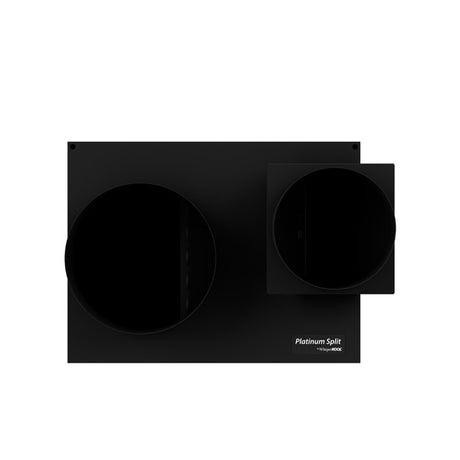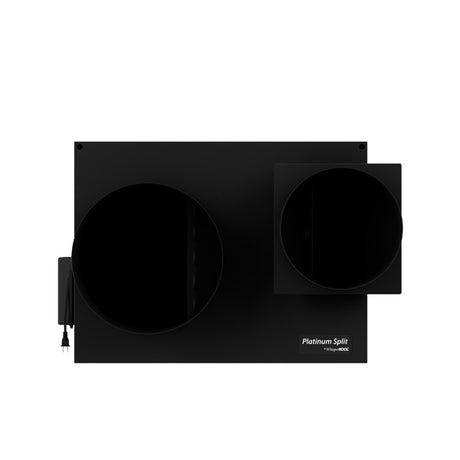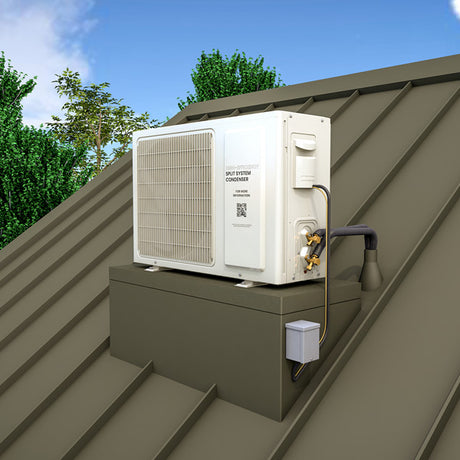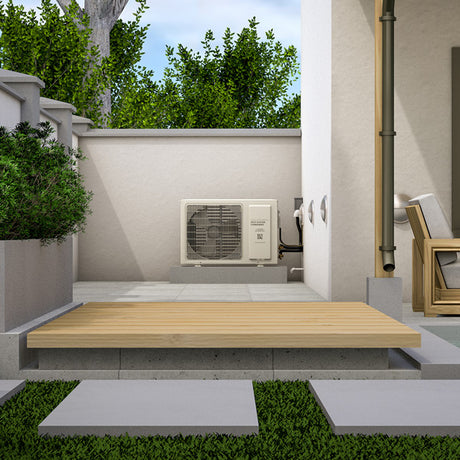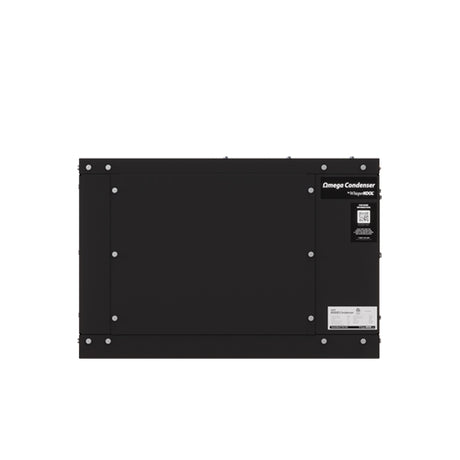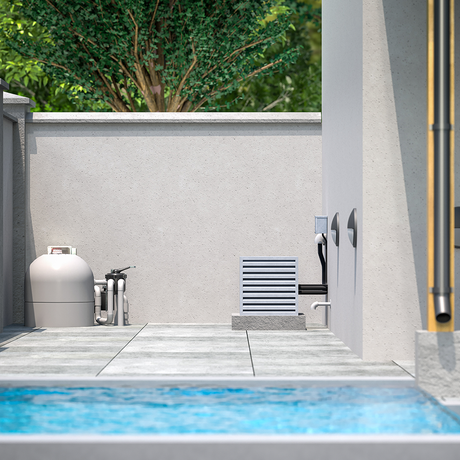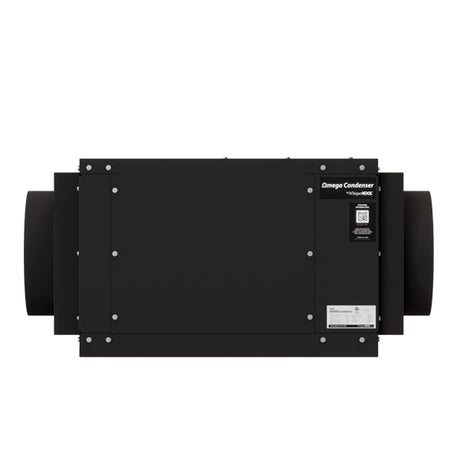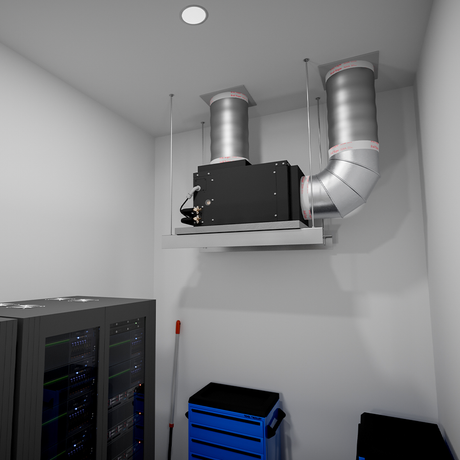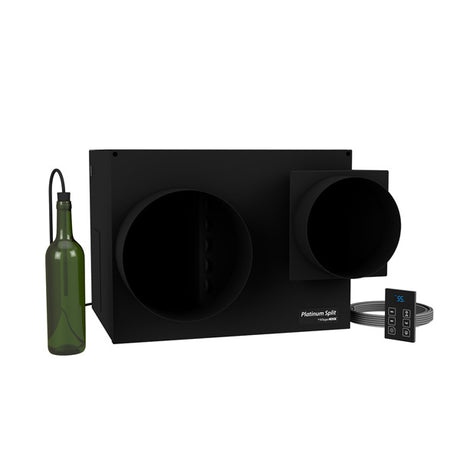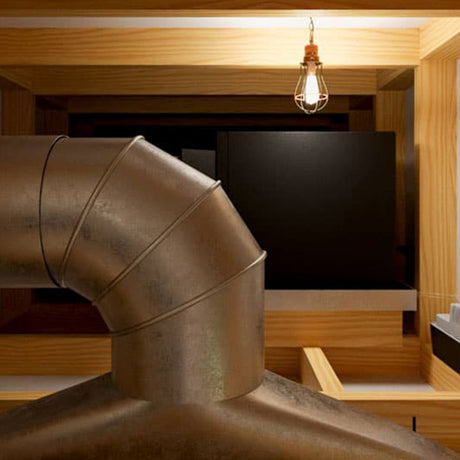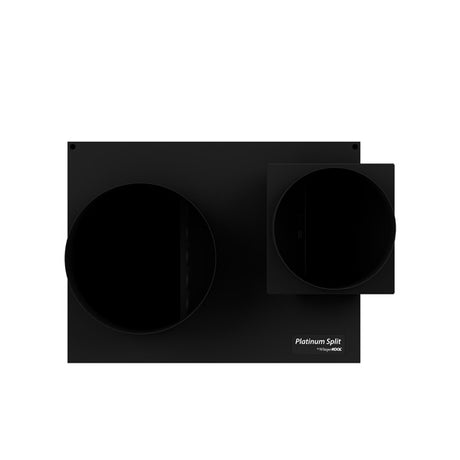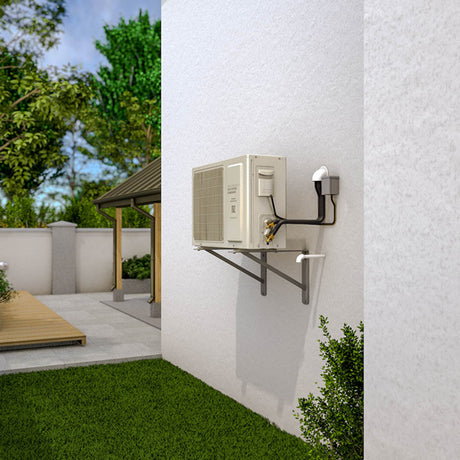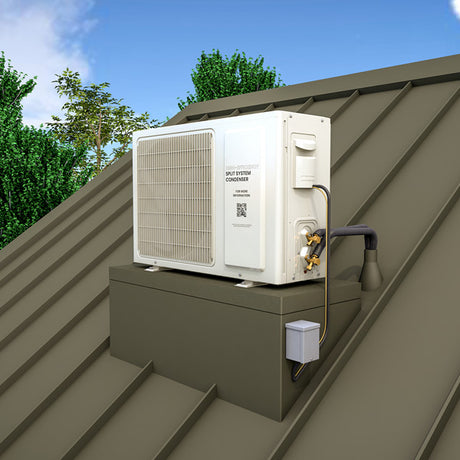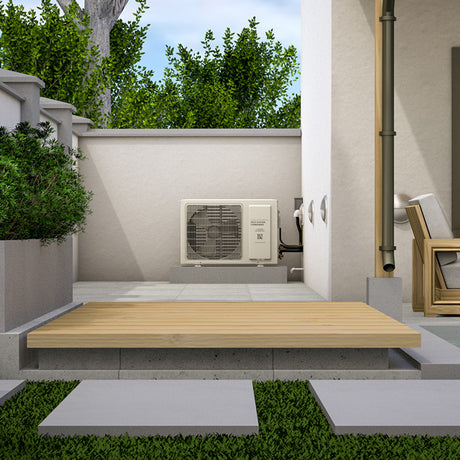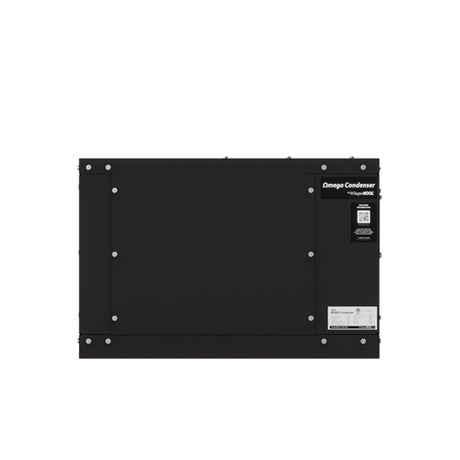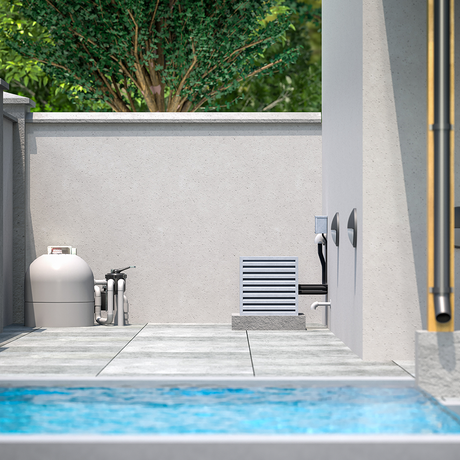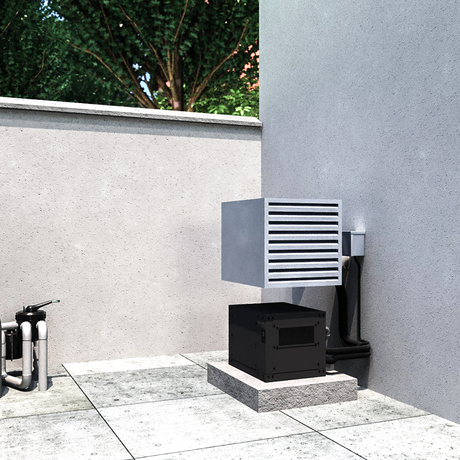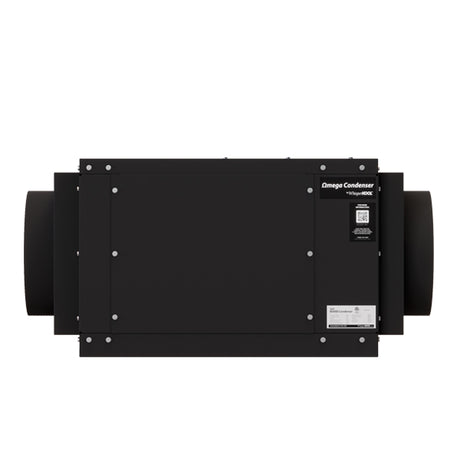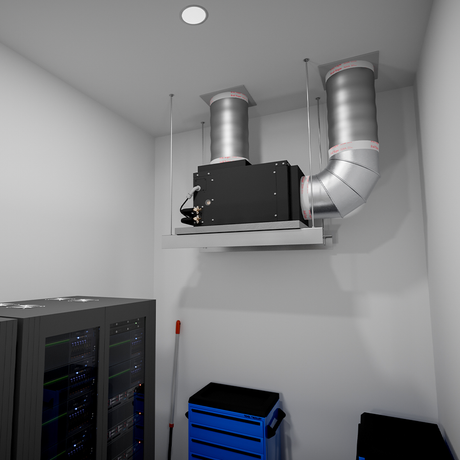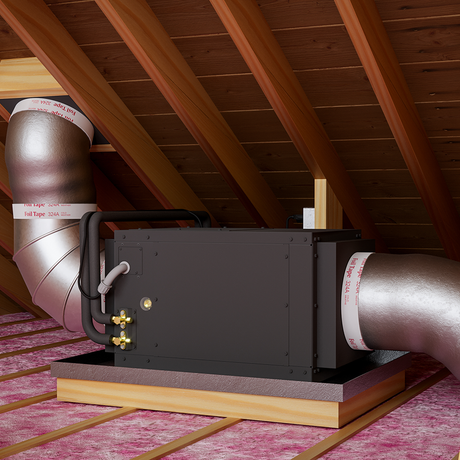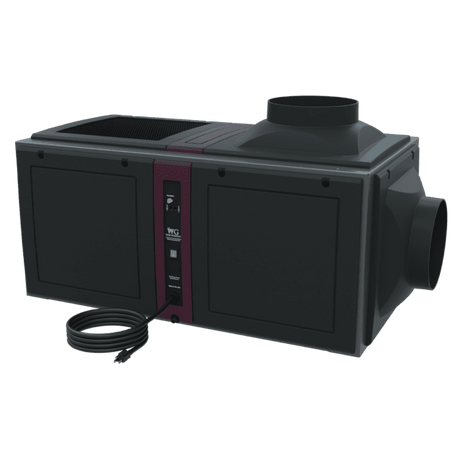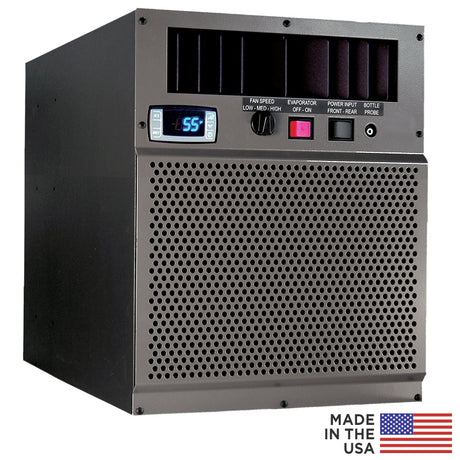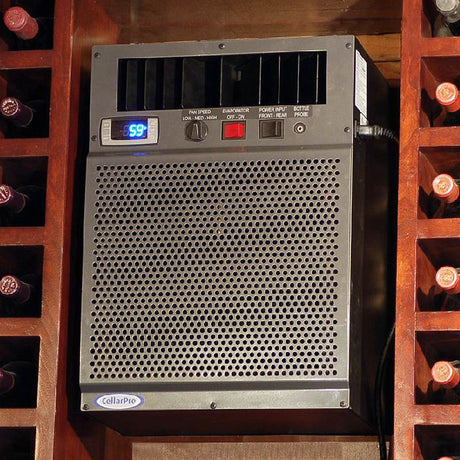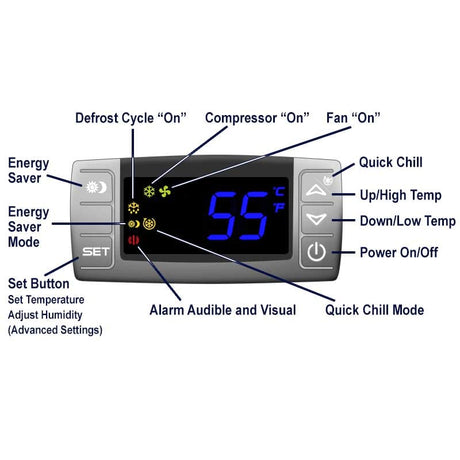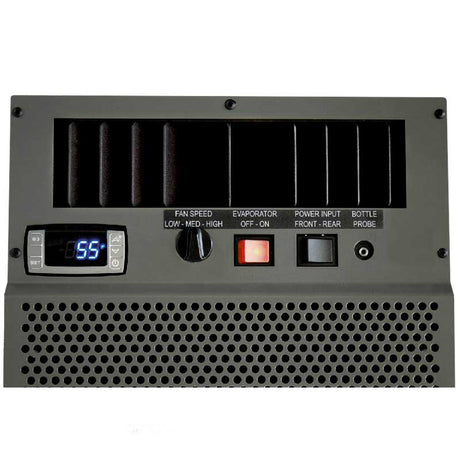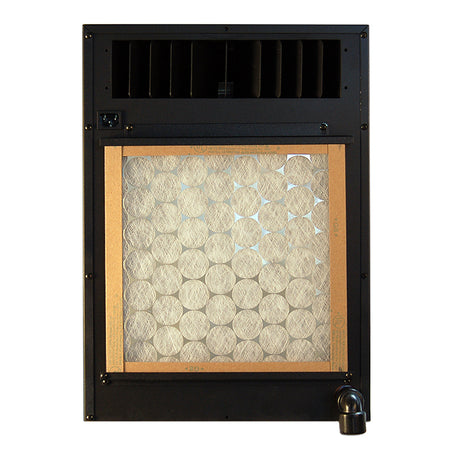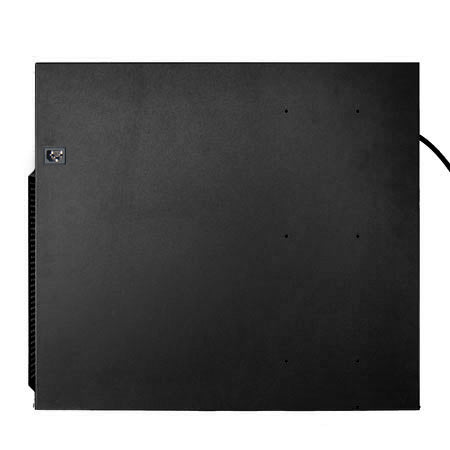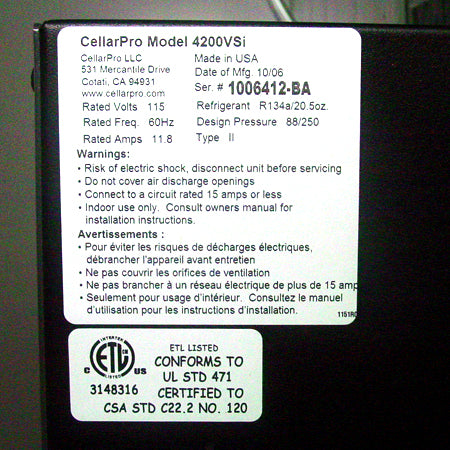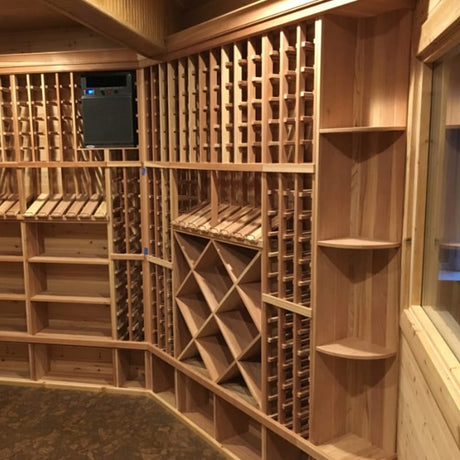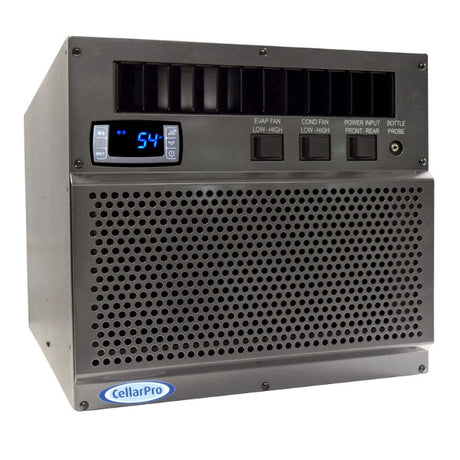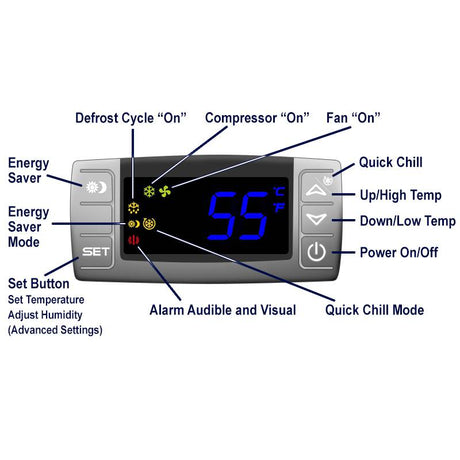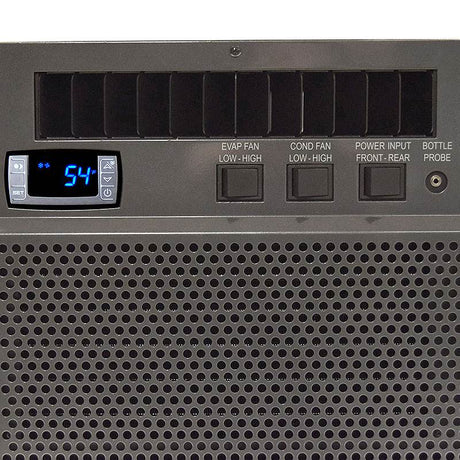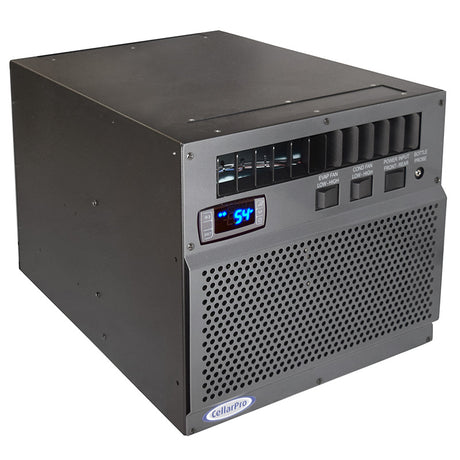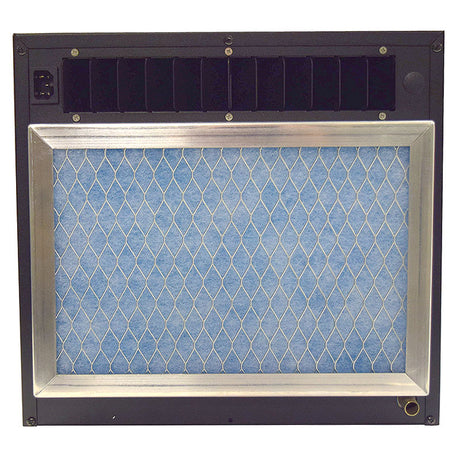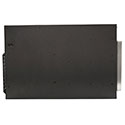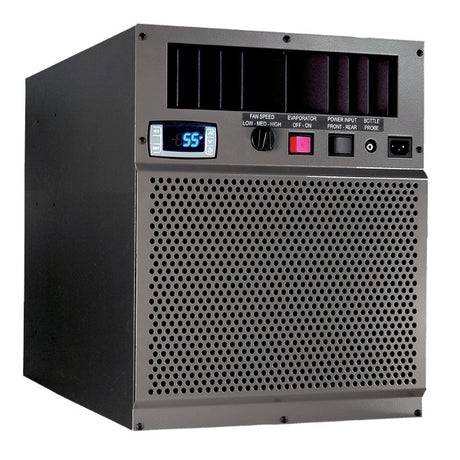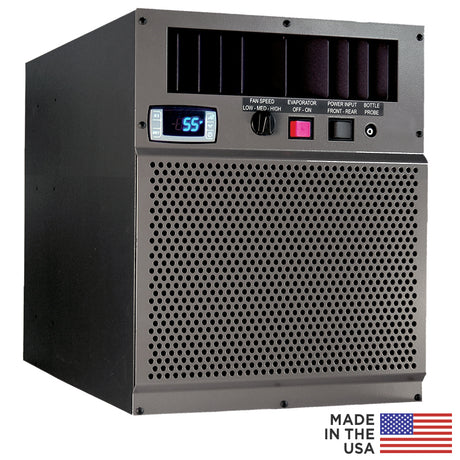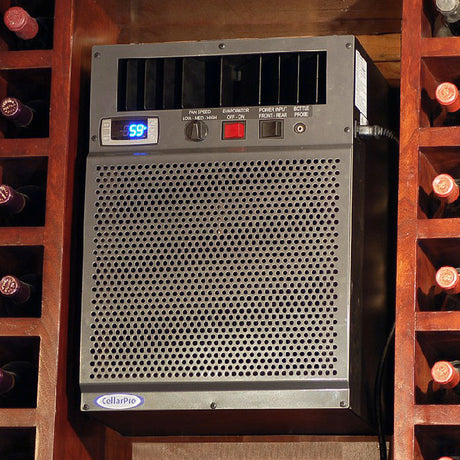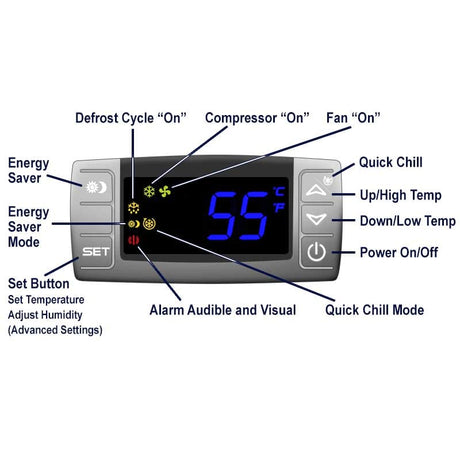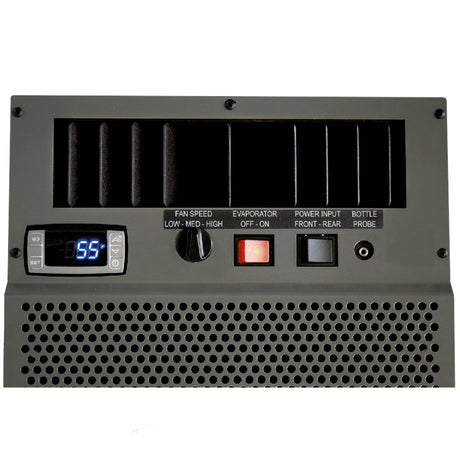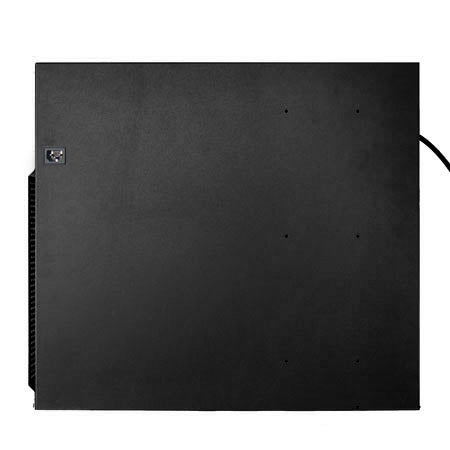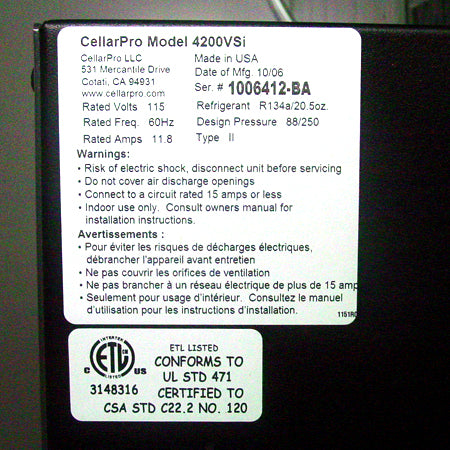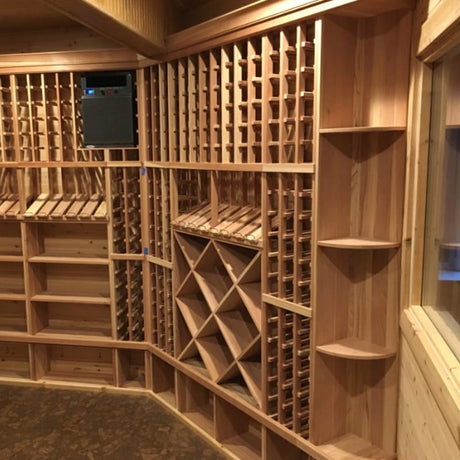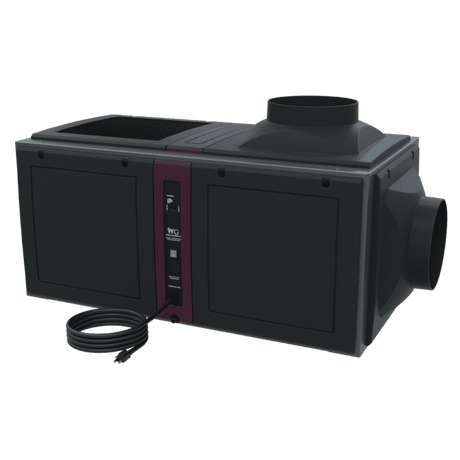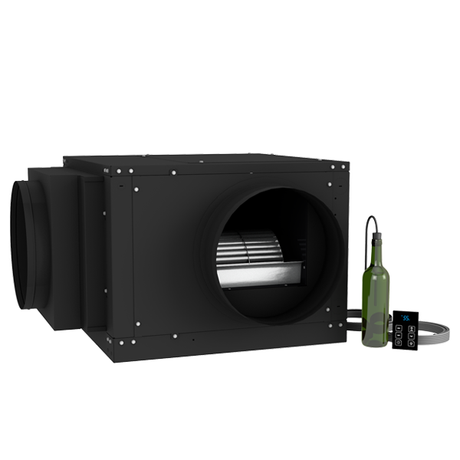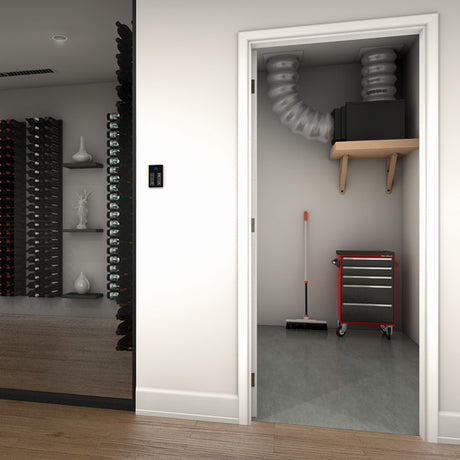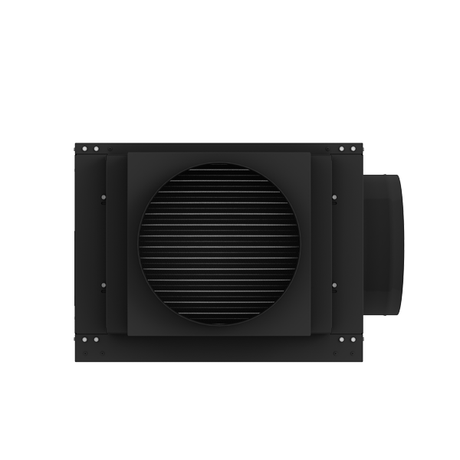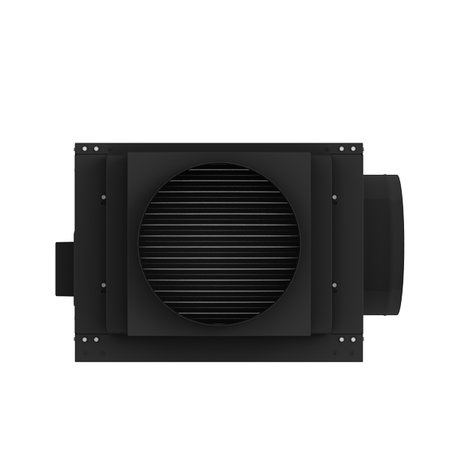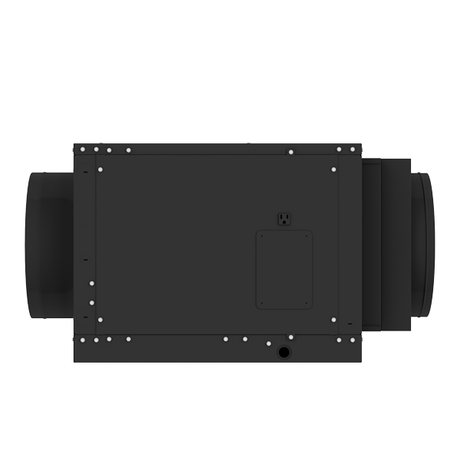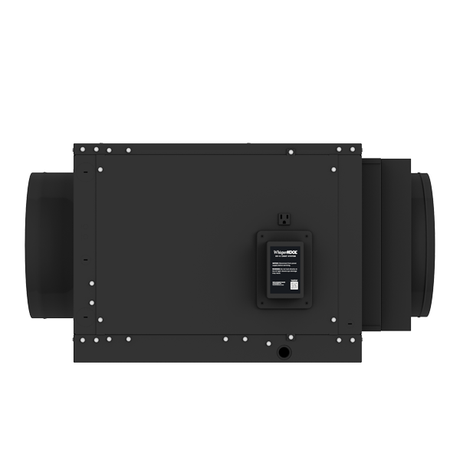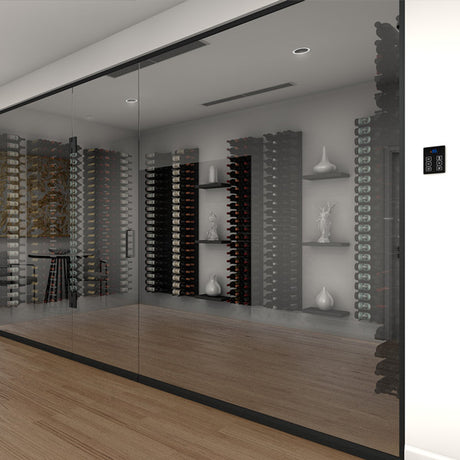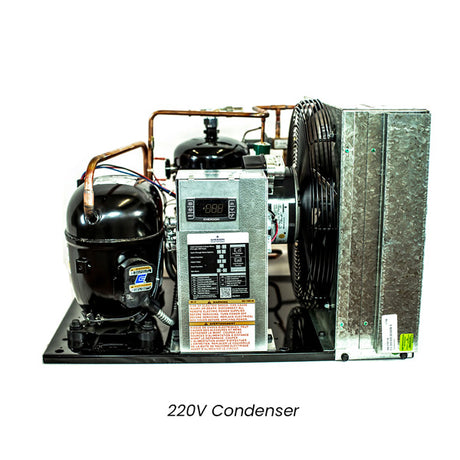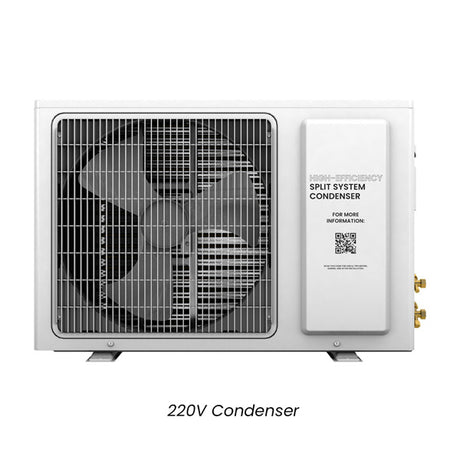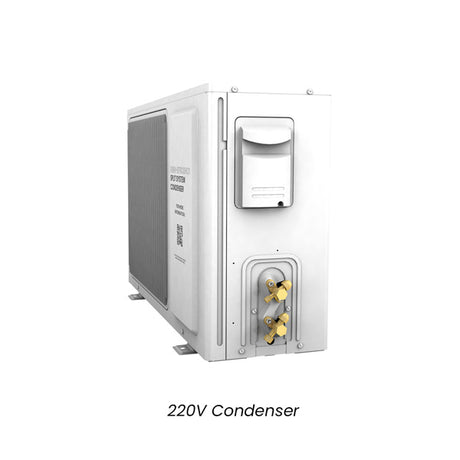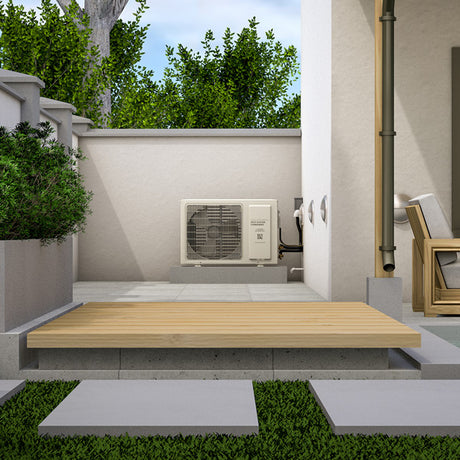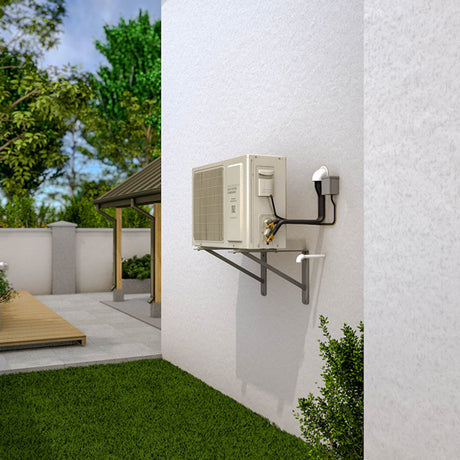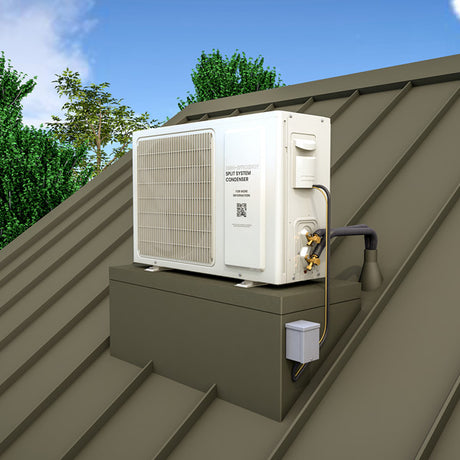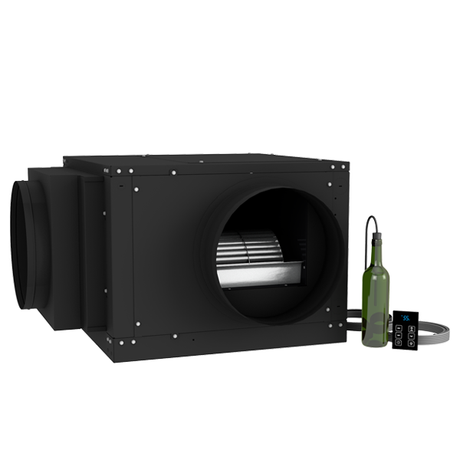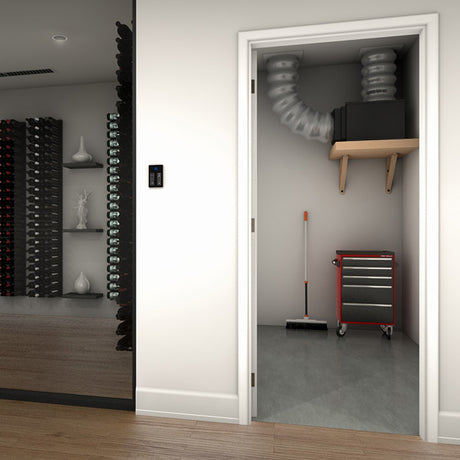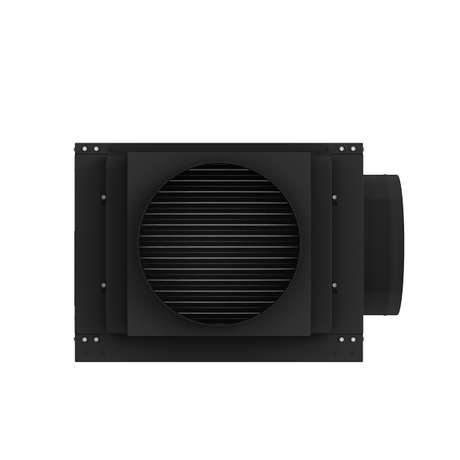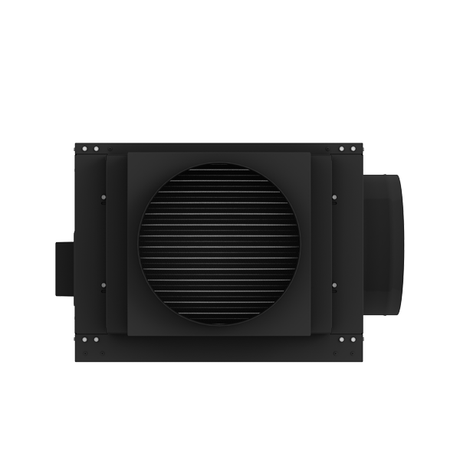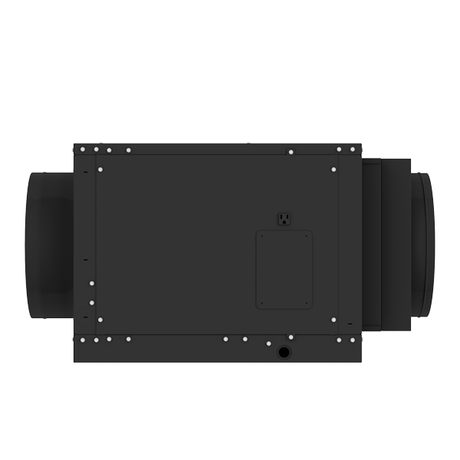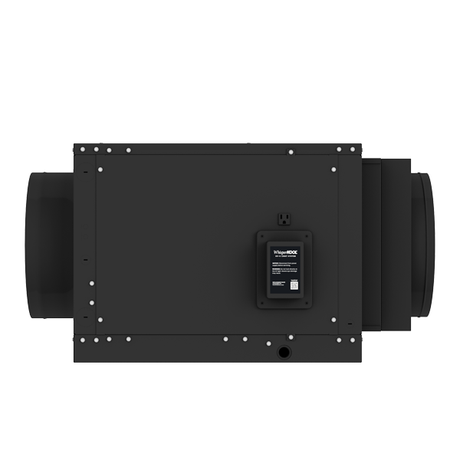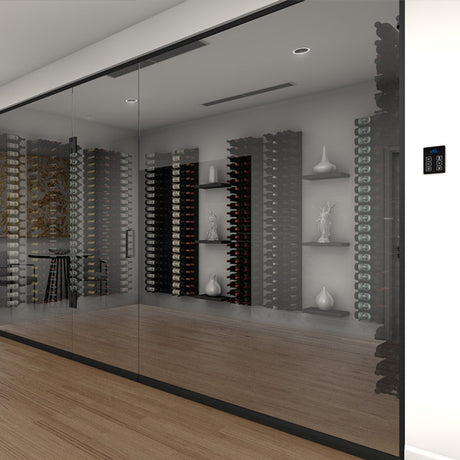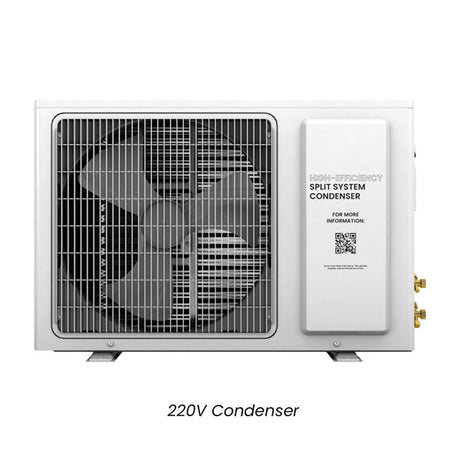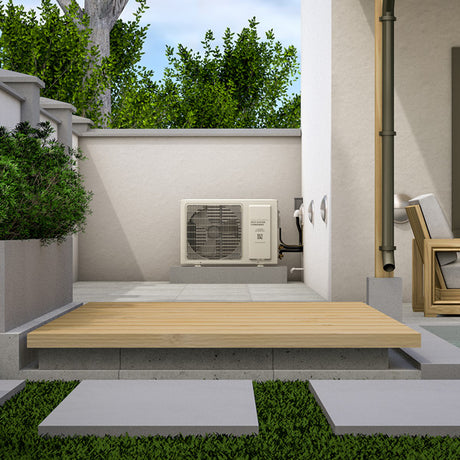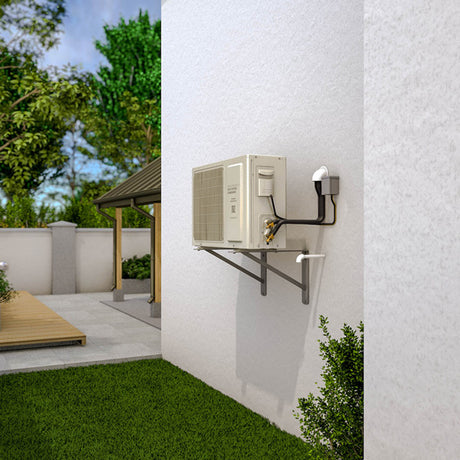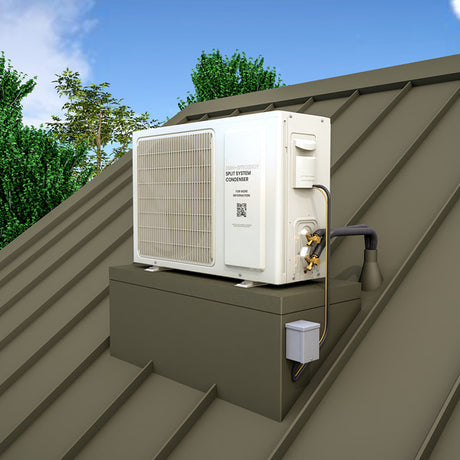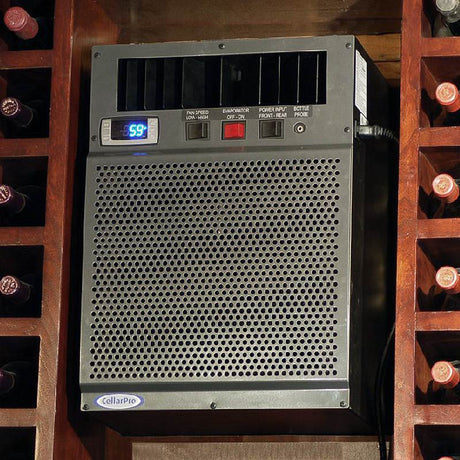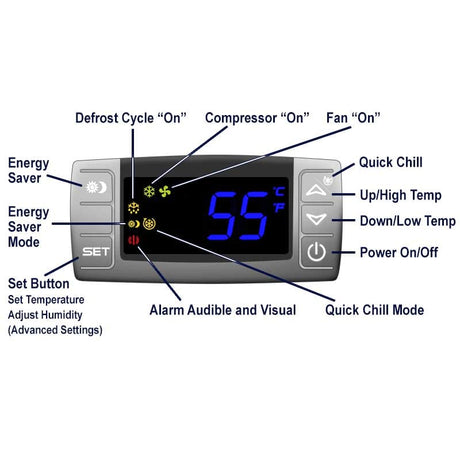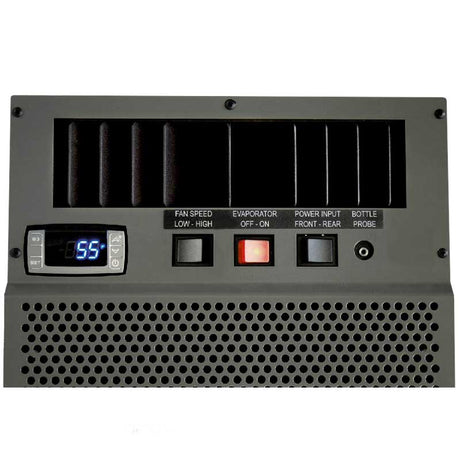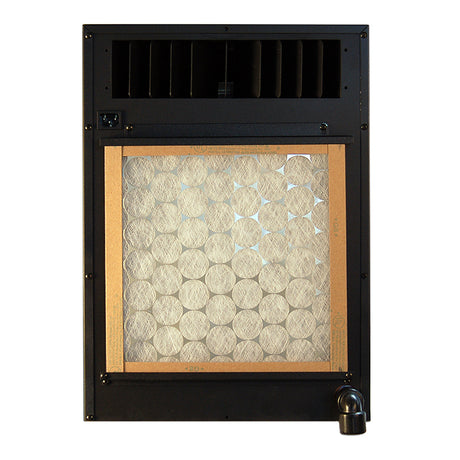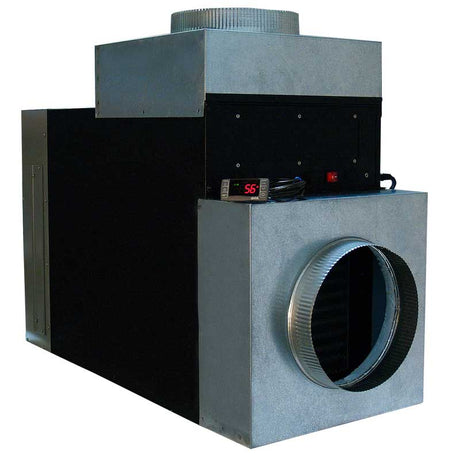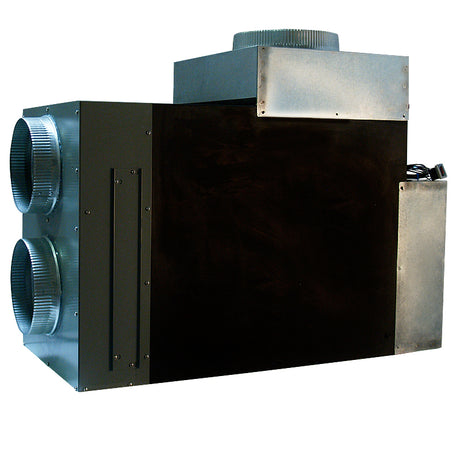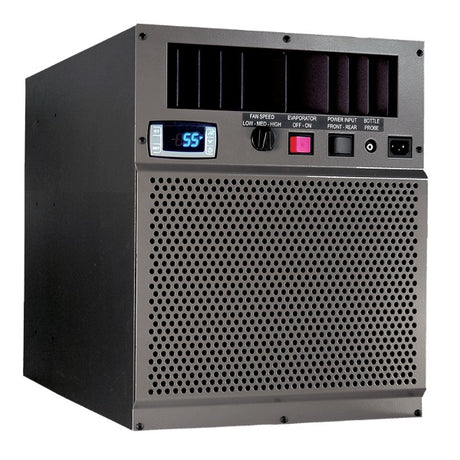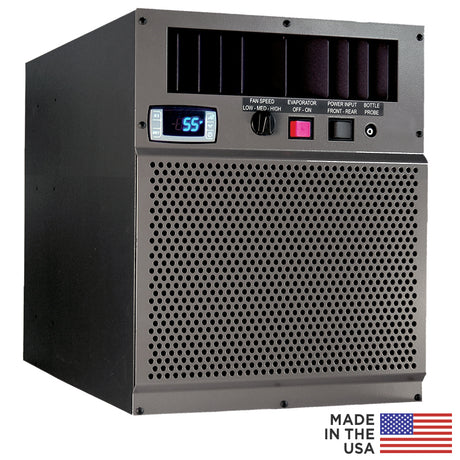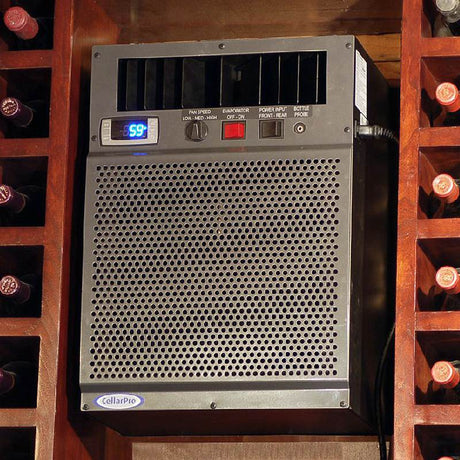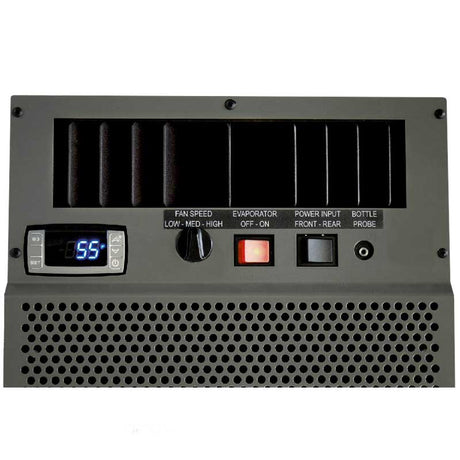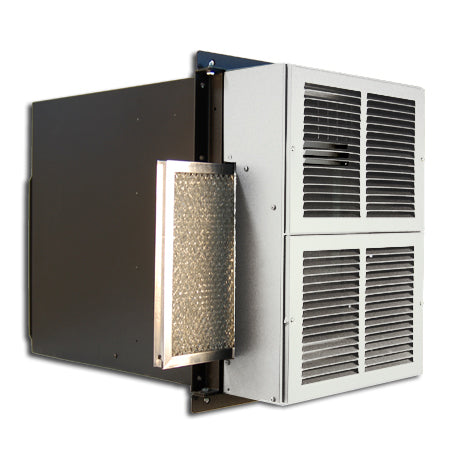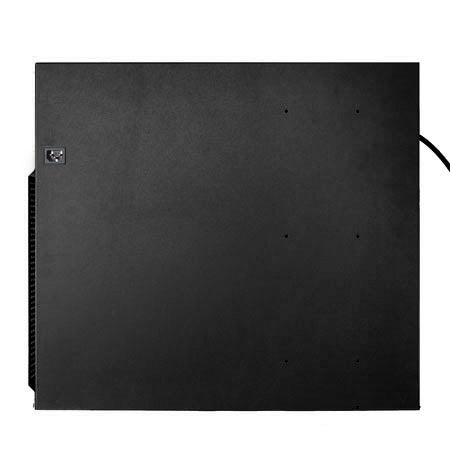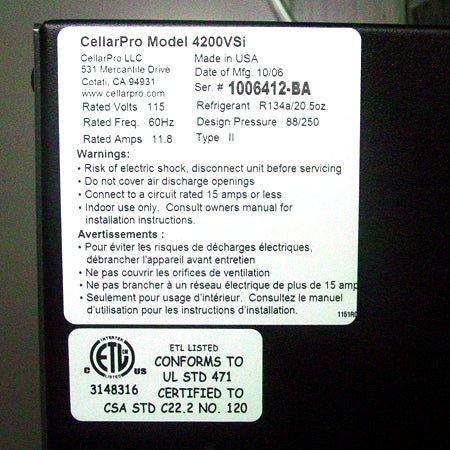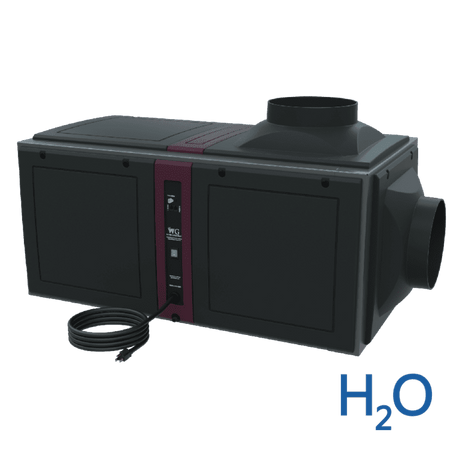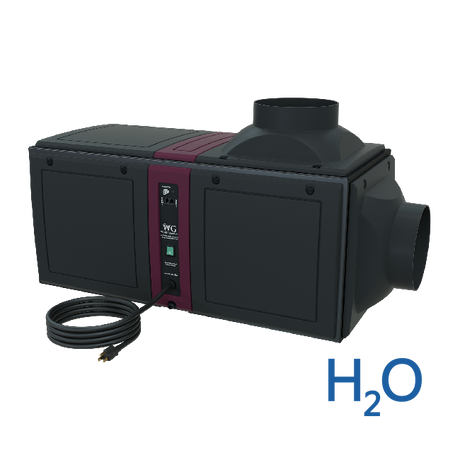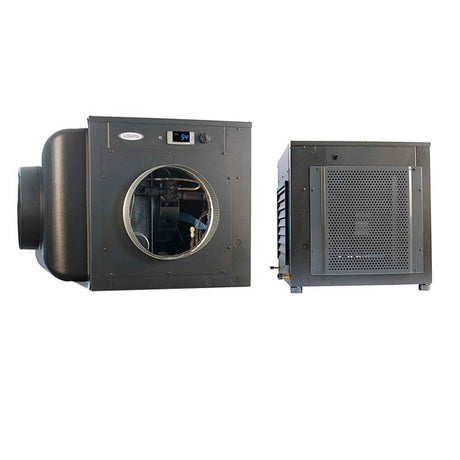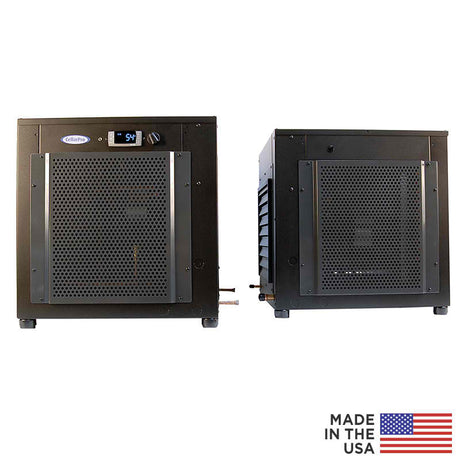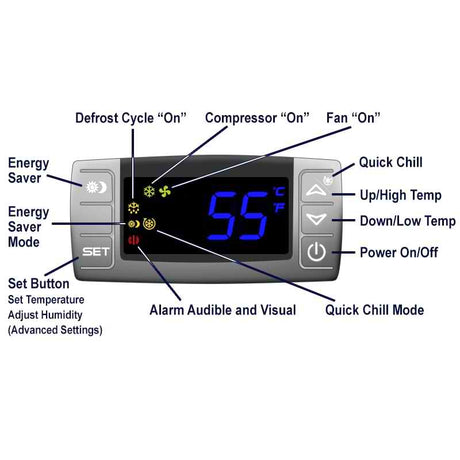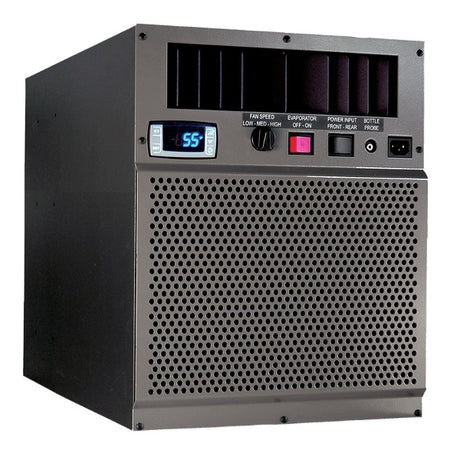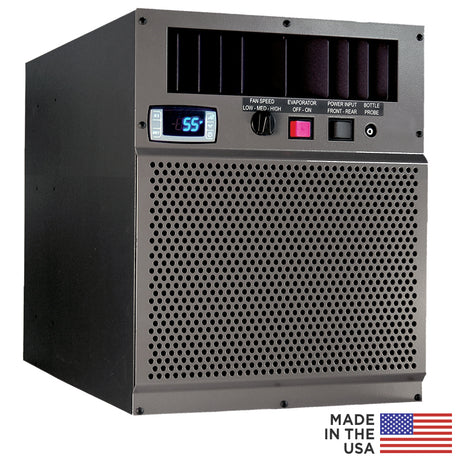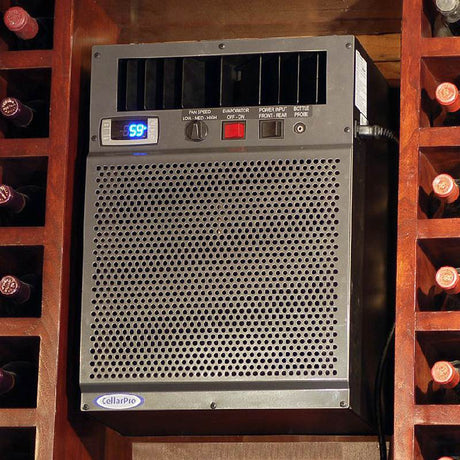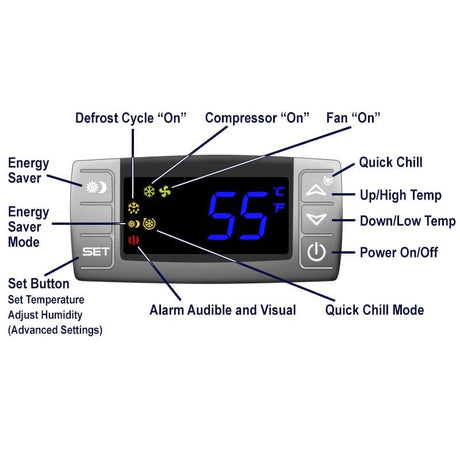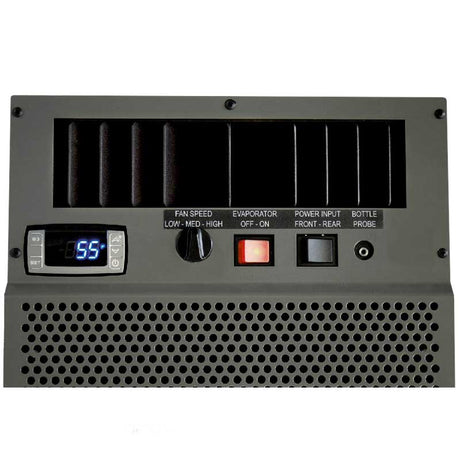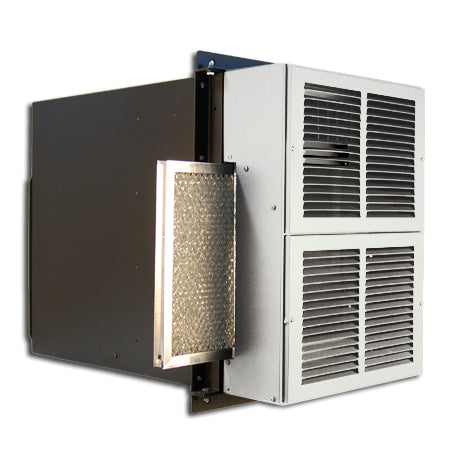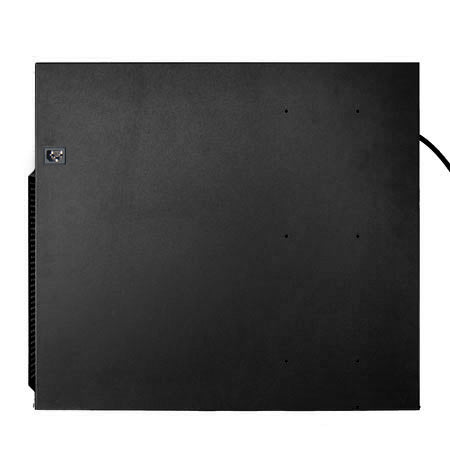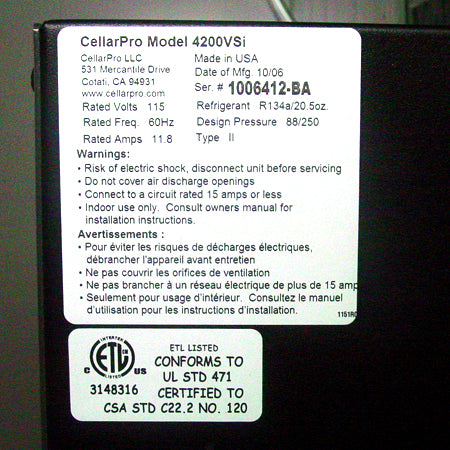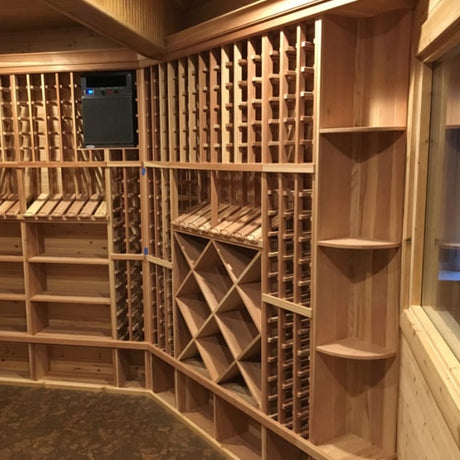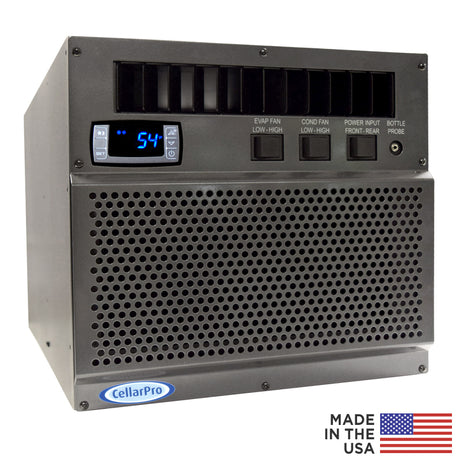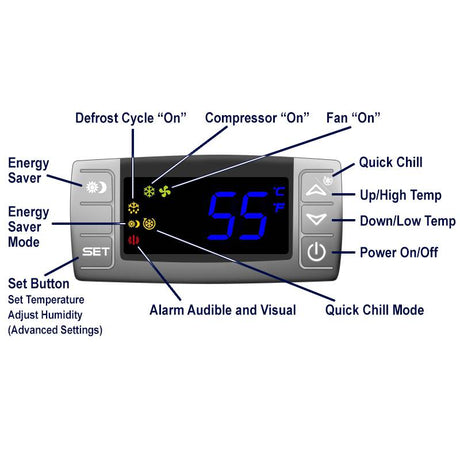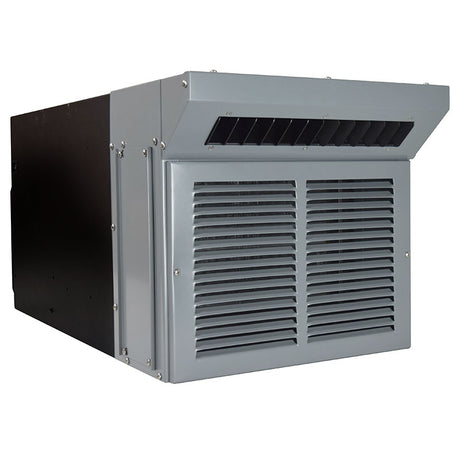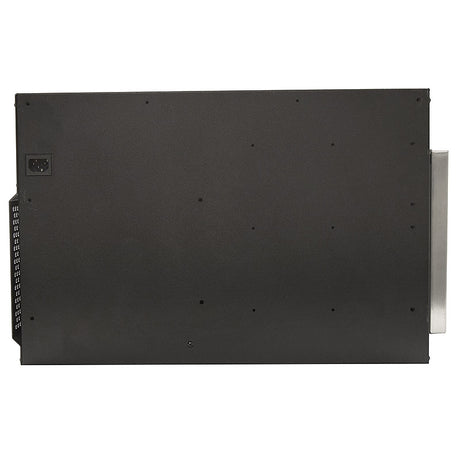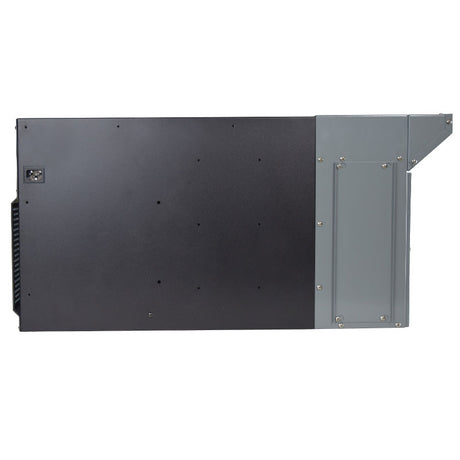Shop 45 WCHQ Ducted Wine Cellar Cooling Units Products
-
-
9% off
-
-
-
-
-
-
-
-
-
-
-
-
-
-
-
9% off
-
-
-
-
Benefits of a Ducted Wine Cellar Cooling System

-
Preserve investment-grade wine with absolute climate stability: Picture pulling a bottle of 1990 Château Margaux from your cellar in 2040. The cork is flawless, the label still crisp, and the first pour smells exactly like the tasting notes promised decades ago. That doesn’t happen by accident - it’s the result of unwavering climate control, down to ±1°F. A ducted system like the Wine Guardian D050 Ducted Wine Cellar Cooling Unit does the quiet, unglamorous work of separating the evaporator coil and fans from your cellar, so there’s no sneaky heat bleed or mechanical vibration unsettling those delicate compounds. Humidity? Locked in at 50-70%, thanks to a sealed vapor barrier (6-mil polyethylene minimum). It will even hold 55°F ±0.5°F through a week of 95°F+ heat outdoors. Compare that to a through-wall unit: think of it like storing a Cézanne in a sunroom - technically possible, but why take the risk?
-
Maintain silent elegance in showpiece spaces: Ever been in a restaurant where the espresso machine drowns out conversation? Now imagine that same buzz coming from your cellar wall while you’re pouring a 2005 Screaming Eagle for friends. Ducted systems such as the WhisperKOOL Fully Ducted Extreme 8000tiR spare you the embarrassment by hiding the noisy parts elsewhere, delivering chilled air through acoustic-insulated ducts (R6+). Done right, you’ll get low-30s decibel levels - about the sound of a page turning in a library - versus the 45-55 dB hum from even high-end self-contained systems. That 10-20 dB drop isn’t just a number; it’s the difference between “pass me the glass” and “what did you say?” in your own home.
-
Integrate discreetly into high-end design: You wouldn’t hang a box fan in the middle of a gallery, so why let cooling hardware disrupt a $100k cellar? Ducted systems like the Wine Guardian Pro DP25 Ducted Unit (Sentinel Series) let you hide the evaporator in ceilings or walls, with vents you can finish to match custom millwork. You can even spec linear diffusers - just a ½-inch slot in a beam - that push 120-150 CFM per outlet. Try doing that with a split system and you’ll be explaining exposed coils to every visitor. Architects love ducted units because they can run duct paths early in the build, avoiding those “where does this thing go?” moments that cost money and compromise design.
-
Control large-cellar climates without hot spots: Ever noticed how the mezzanine in Napa tasting rooms is warmer than the floor below? That’s stratification - hot air rising, cold air sinking. In a cellar, it’s lethal to uniform aging. Ducted systems like the Wine Guardian D200 Ducted Wine Cellar Cooling Unit solve this by adding supply vents at different heights, keeping gradients under 1-2°F from top rack to bottom. For spaces over 1,200 cubic feet, you can even loop the ductwork so air moves evenly, a trick you’ll see in the best estates in Bordeaux. Skip this and your top-row DRCs could mature years ahead of the bottom racks - something you only realize after the corks give up early.
Ducted Self-Contained Cooling Units vs Ducted Split Systems

Both units process hot and cold air using ducting, but the way they process the hot air differs:
- A ducted split wine cellar cooling unit uses refrigerant lines to condense and send heat to a remote outdoor condenser, so only the cold-air ducts to the cellar must stay short and well-insulated, giving more flexibility in locating equipment.
- A ducted self-contained unit sends hot air via ducts back to the main appliance, and so realistically can't have as long ducting as split systems due to heat loss.
Here's a summary of the choices:
| Feature | Ducted Split | Ducted Self-Contained |
|---|---|---|
| Configuration | Two separate units (indoor + outdoor) | Single integrated unit |
| Heat Removal | Remote condenser keeps all heat away from building interior | Heat removed through ducting but unit still generates it in nearby space |
| Noise Level | Very quiet in and near cellar | Louder than split, especially near installation site |
| Installation | Requires refrigerant lines & HVAC technician | Easier installation, only ductwork needed |
| Maintenance Access | Parts in different locations; condenser accessible outdoors | Single location, easier access |
| Flexibility in Location | More placement options for cellar ductwork | Limited by where the unit can be installed and ducted effectively |
| Cost | More expensive upfront (equipment + refrigeration tech labor) | Less expensive upfront |
| Energy Efficiency | Often more efficient long-term | Slightly less efficient due to heat proximity |
Other Features To Consider When Buying a Ducted Wine Cooling Unit

Cooling Capacity vs. Energy Efficiency
-
High-capacity models - Think of these as your “go big or lose big” option. They pack 8,000-12,000 BTUs, handle large rooms or heat-heavy designs, and use 8-10" ducting to keep air moving without choking it. Perfect for 1,500+ bottles or cellars with floor-to-ceiling glass walls. Underestimate here, and you’ll watch the temp climb faster than tickets to a Napa Reserve weekend. Spec BTUs at least 20% above your calculated heat load, and you’ll sleep easier in July. The Wine Guardian D088 Ducted Wine Cellar Cooling Unit is a prime example.
-
Energy-optimized models - 3,000-6,000 BTUs, variable-speed fans, and miserly energy use (<1,200 kWh/year). Ideal for a tight, well-insulated cellar with R-19+ walls and R-30+ ceilings. These solve the “why is my bill higher than the tasting menu?” problem without losing precision. Go this route if your build already has the thermal envelope of a Swiss vault. For this category, look at the Wine Guardian D025 Ducted Wine Cellar Cooling Unit.
Smart-Home Integration vs. Standalone Operation
-
Integrated controls - Imagine you’re at the Pebble Beach Food & Wine Festival and get an alert: humidity dropped to 45%. With an integrated system like the Wine Guardian Pro DP25 Water-Cooled (Sentinel Series), you can adjust it before the oysters are served. Look for Control4 or Crestron compatibility, Z-Wave/Zigbee modules, and sensors accurate to ±0.5°F.
-
Standalone thermostats - For the “less to go wrong” crowd. Everything lives in one digital thermostat with ±1°F precision and humidity readout within ±3% RH. No Wi-Fi dependency, no app updates. Perfect if you’re on-site and prefer turning a dial to navigating a menu tree.
Noise Isolation Level: Ultra-Silent vs. Standard Quiet
-
Ultra-silent builds - Sub-35 dB, thanks to R8-insulated ductwork and anti-vibration mounts. You’ll hear the cork pull before you hear the system. Ideal if your cellar shares a wall with a lounge. But remember: ultra-quiet often means more duct length - plan for 20-30 extra feet to place the condenser far enough away. The WhisperKOOL Fully Ducted Extreme 5000tiR fits the bill.
-
Standard quiet builds - Under 45 dB, fine for basement installs or detached storage. You save budget, and unless you’re hosting tastings in the cellar itself, you won’t notice the difference. Always ask for decibel ratings at 3 feet, so you’re comparing like with like.
Install Speed: Rapid-Deploy vs. Fully Custom
-
Rapid-deploy kits - 6-8" ducts, pre-sized, vent covers, mounting brackets - it’s all in the box. Shipments can arrive in under a week. Best for “the cases are arriving Friday” emergencies. Make sure duct rating is vapor-sealed and static pressure ≤0.08 in.wg per 10 feet. The CellarPro 1800H Houdini Cooling Unit is a rapid-install option for smaller spaces.
-
Fully custom installs - For when every grille matches your walnut millwork and duct runs dodge structural beams. You’ll wait weeks, but it’s worth it if the system disappears into the build. Just keep duct bends within manufacturer specs (usually ≤0.5 in.wg total static pressure) to avoid choking airflow.
FAQs Before You Buy

-
How do ducted systems differ from self-contained units?
Ducted units move noise and heat out of the cellar using insulated ducts. That’s why top restaurants use them for their private cellars. ≤35 dB, ±1°F stability, versus 45+ dB and ±3°F on self-contained. -
What BTU rating matches my cellar?
Measure cubic feet, adjust for insulation, glass, ambient swing. Volume × 1.5 (poor insulation) or × 1.1 (excellent). Example: 1,000 cu. ft., R-19 walls, low glass = ~5,500 BTUs; glass doors and weak insulation = ~7,000 BTUs. Avoid oversizing - humidity plummets, corks shrink. -
Can a ducted unit be retrofitted?
Yes - if you can run ducts and have condenser space with ventilation. Keep runs ≤25-50 ft. unless you add booster fans. -
Are ducted units quiet enough for entertainment areas?
Ultra-silent builds are quieter than a sommelier uncorking a bottle (<35 dB). Place vents strategically, and guests won’t know the system’s on. -
What upkeep is required?
MERV 8-11 filters every 3-6 months, coil vacuum annually, pro refrigerant check every 18-24 months. Expect $150-300 yearly service. -
Can these units integrate with my automation system?
Many of our ducted systems can connect to smart-home platforms, but the exact capability depends on the model. For example, Wine Guardian’s Sentinel Series supports integration via BACnet or optional Wi-Fi controls for Crestron/Control4. CellarPro units can pair with smart thermostats like Ecobee or Nest through a conversion kit. If automation is a priority, choose a model with native connectivity or the required accessory kit so you can receive alerts and adjust climate from anywhere.

